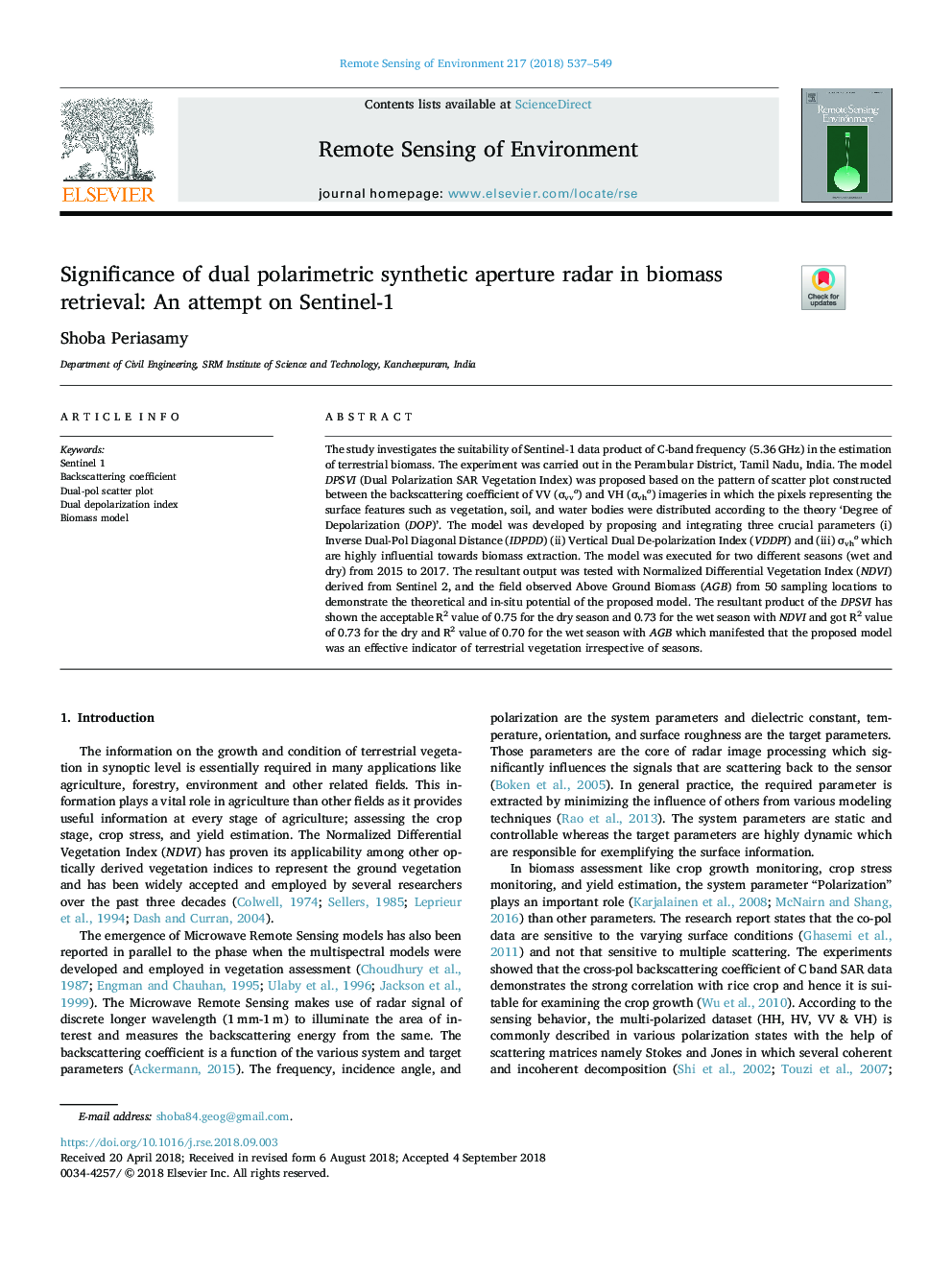| Article ID | Journal | Published Year | Pages | File Type |
|---|---|---|---|---|
| 10113989 | Remote Sensing of Environment | 2018 | 13 Pages |
Abstract
The study investigates the suitability of Sentinel-1 data product of C-band frequency (5.36â¯GHz) in the estimation of terrestrial biomass. The experiment was carried out in the Perambular District, Tamil Nadu, India. The model DPSVI (Dual Polarization SAR Vegetation Index) was proposed based on the pattern of scatter plot constructed between the backscattering coefficient of VV (Ïvvo) and VH (Ïvho) imageries in which the pixels representing the surface features such as vegetation, soil, and water bodies were distributed according to the theory 'Degree of Depolarization (DOP)'. The model was developed by proposing and integrating three crucial parameters (i) Inverse Dual-Pol Diagonal Distance (IDPDD) (ii) Vertical Dual De-polarization Index (VDDPI) and (iii) Ïvho which are highly influential towards biomass extraction. The model was executed for two different seasons (wet and dry) from 2015 to 2017. The resultant output was tested with Normalized Differential Vegetation Index (NDVI) derived from Sentinel 2, and the field observed Above Ground Biomass (AGB) from 50 sampling locations to demonstrate the theoretical and in-situ potential of the proposed model. The resultant product of the DPSVI has shown the acceptable R2 value of 0.75 for the dry season and 0.73 for the wet season with NDVI and got R2 value of 0.73 for the dry and R2 value of 0.70 for the wet season with AGB which manifested that the proposed model was an effective indicator of terrestrial vegetation irrespective of seasons.
Related Topics
Physical Sciences and Engineering
Earth and Planetary Sciences
Computers in Earth Sciences
Authors
Shoba Periasamy,
